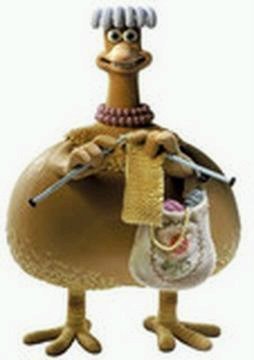(Blogger is just not cooperating. See pix under category
"Knit with BoS")
Materials:
1 circular knitting needle and one set of 4 dpns in same size
(size depends on the yarn you choose)
A large bag of yarn (amount depends on size and yarn used)
Your choice of patterns (I used some from a
mitten book and other misc sources)
Pattern:
Work a gauge swatch using patterning for best accuracy
From the reference chart located here, choose a size for the
sweater or use measurements you already have for custom fit.
These are fairly generously sized. See notes at the end of pattern.
STEP 1: Grab a calculator and multiply chest measurement
corresponding to size by YOUR gauge. This measurement is X.
STEP 2: The chest measurement in inches = Z
STEP 3: Still using calculator, fill in the following chart,
then fill in for your pattern in the section that follows.
Measurements: Neck = 0.40 x X = _____
Front & Back = 0.42 x X = _____
Neck1 = 0.50 xX = _____
Underarm Ease = 0.08 x X = _____
Neck2 = 0.77 x X = _____
Sleeve1 = 0.25 x X = _____
Neck3 = 1.16 x X = _____
Sleeve2 = 0.33 x X = _____
Neck4 = 1.34 x X = _____
Sleeve3 = 0.20 x X = _____
Yoke depth (final) = 0.25 x Z = _____
Body 2 = 0.90 x X = _____
Yoke depth1 = 0.30 x 0.25 x Z = _____
Yoke depth2 = 0.50 x 0.25 x Z = _____
Remember to transfer these to the actual knitting pattern below.
1. Cast on Neck_____. Rib at least 2 inches (I recommend 3).
2. In pattern, knit 2 rounds even. Increase to Neck1_____sts.
3. Knit one round even. Increase to Neck2_____sts.
4. Knit until length from ribbing is Yoke depth 1______inches,
then increase to Neck3_____sts.
5. Knit until length from ribbing is Yoke depth 2_____inches,
then increase to Neck4 _____sts.
6. Knit even until length from ribbing is Yoke
depth (final)_____inches. Yoke is now complete.
Divide as follows:
Sleeve1_____sts on holder
Knit Back_____sts
Sleeve1_____ sts on holder
Cast on Underarm Ease_____sts.
Knit Front_____sts.
Cast on Underarm Ease_____sts.
7. Join. Number of sts should be equal to X
(the first calculated measurement you made).
Work even until 2" short of desired length.
Decrease to Body2_____sts over the next 2".
Add ribbing. Cast off.
8. Sleeves - Pick up Sleeve1_____sts. Pick up, M1 style
up to 3 sts at joint between these sts and Underarm
Ease sts. Pick up Underarm Ease _____sts. Pick up,
M1 style up to 3 sts at joint between these sts and first
st picked up. Join. Total arm sts should be ABOUT
Sleeve2_____sts. Work even, decreasing as desired
down to Sleeve3_____sts at desired length.
Add ribbing. Cast off.
9. Tuck in all ends.
NOTES:
Do be sensible. If you knit in the other direction, keep in
mind that when putting sleeve stitches on holders, you
should be at a spot where this is reasonable. If not, knit
to such a spot, or contact me if you get confused.
It all seems perfectly straightforward to me, but I've
been knitting for decades and may do something
intuitively that might be new to you.
If you are a fluffy person, the yoke depth may
be more than you are interested in. Please do adjust
the depth by changing the distance between increase
rows to suit your needs. You will want the yoke to
come down past your actual armpits by a comfortable
margin, but not so far down that moving your arms
becomes restrictive. The nice thing here is that you
can try it on as you go.
Don't use WoolEase at the neck. It stretches dreadfully,
which I have found to be the case whenever I've used
it in a sweater, much to my dismay. It's fine for the rest
of the sweater and even for the cuffs if you like them loose.
At the neck, do cast on moderately loosely so it will fit
over the head. If I'm using size 8 needles, I generally do
18 rows of ribbing, which gives a VERY nice "flow" to the
look. If the neck stretches out after it's been worn a few
times (like with WoolEase -grrrr, grrrr), do not despair.
Just pick up Neck sts in a more resilient yarn and rib up a
few rows. With all the oddball color changes in the rest of
the sweater, it just looks like a design feature.
Do change to a new color at the Neck increases to "hide"
them. I usually have the increase row be one color which
will be the background in the next pattern, then end
the pattern with a solid row also.
Don't let the "math" throw you. If you come up with
some funky number like 6.932, just round up to be safe.
If you wind up over or under a couple of sts here
and there, don't worry about it.
For a cardigan, do all the calculations the same.
Then work it basically the same way, just divide the
front stitches in half and work back and forth.
When you've finished, work a strip of garter stitch
which, when slightly stretched, will be the same length
as the sweater and sew into place or use any border
band method of your choice.
Not for commercial publication, unpublished
copyright 1999.


No comments:
Post a Comment